Additional notes (click to expand)
Commemorative
This was named in honour of Anders (Andreas) Dahl (1751–89), the Swedish botanist and physician, by the Spanish botanist Antonio José Cavanilles (1745–1804) in 1791. Dahl was born in Varnhem, Västergötland, Sweden, the son of the preacher Christoffer Dahl and his wife Johanna Helena Enegren. He was one of the co-founders of the ‘Swedish Topographic Society in Skara’ in 1769 (aged 18). Dahl studied medicine at the University of Uppsala, where he was a student of Carl Linnaeus, but did not finish his studies for financial reasons. He worked with Claes Alströmer (of Alstroemeria) in his botanical garden near Gothenburg, collecting plants and travelling widely. Dahl received an honorary degree in medicine from Kiel in 1786, and became associate professor and botanist at Turku University in 1787. Here he published his Observationes botanicae circa systema vegetabilium divi a Linne (Botanical observations on the Linnaean system of plant classification, 1787). The majority of his herbarium was destroyed by fire in 1827, but parts survive in Helsinki and Edinburgh. Dahl tried (unsuccessfully) to keep Linnaeus’s herbarium in Sweden in 1783 when it was purchased by Sir James Smith for the Linnean Society of London. His friend, the botanist Carl Thunberg, named a plant Dahlia crinita (now Trichocladus crinitus) in his memory in 1792 (crinita is Latin for long hair in reference to Dahl’s long beard). His Horologium florae (a floral clock) was
published posthumously in 1790.
Oakeley, Dr. Henry. (2012). Doctors in the Medicinal Garden. Plants named after physicians. Royal College of Physicians.
link
The species name is for H.J. Merck, a wealthy Hamburg banker who sent seeds to Johann Georg Christian Lehmann (1792-1860) Director of the Hamburg Botanical Garden from Mexico. Lehmann named it after him on the occasion of Merck's son's wedding in 1839. The son, Ernst Merck, was founder of the Hamburg Zoological Garden. There was a Dr Merck, physician in the hospital in Irkutsk who accompanied Sauer and Billings on their expedition from 1785-1794 to Northern Russia and Alaska and acted as the expedition's naturalist, who is probably the botanical author E. Merck in the Harvard Herbaria database. No plants named by him are known.
Martin Sauer and Joseph Billings (1802) An Account of a Geographical and Astronomical Expedition to the Northern Parts of Russia in the years 1785-1794 .
Horticulture
Dahlia merckii is a perennial in the Asteraceae family from north and central Mexico. Delicate, single lilac flowers are produced in late summer. It grows happily in partial shade near to the base of a large plane tree, but the plants are kept well watered during dry spells in the summer months. It is one of the hardiest dahlias, and the tubers survive the winter underground with layer of mulch for protection (by Clare Beacham)
Oakeley, Dr. Henry. (2012). Doctors in the Medicinal Garden. Plants named after physicians. Royal College of Physicians.
link
Other use
This wild species of the well-known garden plant comes from Mexico. It represents, in the Medicinal
Garden, the possible future of medicine. It does not suffer from mildew because it contains a gene that gives it resistance to fungal infections. The fungal-resistance gene from D merckii has been experimentally inserted into the mildew-prone aubergine, to give healthy crops that do not need spraying with fungicides. Many of the illnesses that affect humankind are due to defective genes, from cystic fi brosis and schizophrenia to diabetes and atherosclerosis. If these defective genes can be replaced by genes that do not carry these diseases, medicine will have made a step forward that will dwarf all past progress. Making transgenic plants is complicated and has many opponents. Inserting ‘healthy’ genes into people is much more difficult, but – one hopes – will be possible and welcomed when it happens. We can look forward to the day when we will regard insulin for diabetes and major tranquilisers for schizophrenia with the same condescending scorn that we have for the Doctrine of Signatures and copper bangles for arthritis.
Oakeley, Dr. Henry. (2011). A Year in the Medicinal Garden of the Royal College of Physicians, revised edition. Royal College of Physicians, London. page 87
link
Geographical distribution
- Northern America, Mexico, Mexico Northeast
- Northern America, Mexico, Mexico Southeast
- Northern America, Mexico, Mexico Southwest
Dahlia merckii Lehm. (B)
Family: ASTERACEAEGenus: Dahlia
Species: merckii Lehm. (B)
Common names: Merck Dahlia
Distribution summary: N. & C. Mexico
Habit: Perennial
Hardiness: H4 - Hardy; average winter
Habitat: Wasteland and well drained soils
Garden status: Currently grown
Garden location: North America (A)
Flowering months: July, August, September
Reason for growing: Commemorative
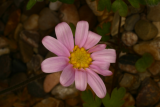
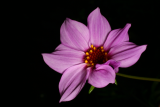
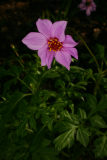
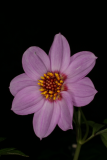

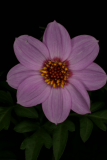
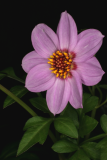
.JPG)
.JPG)